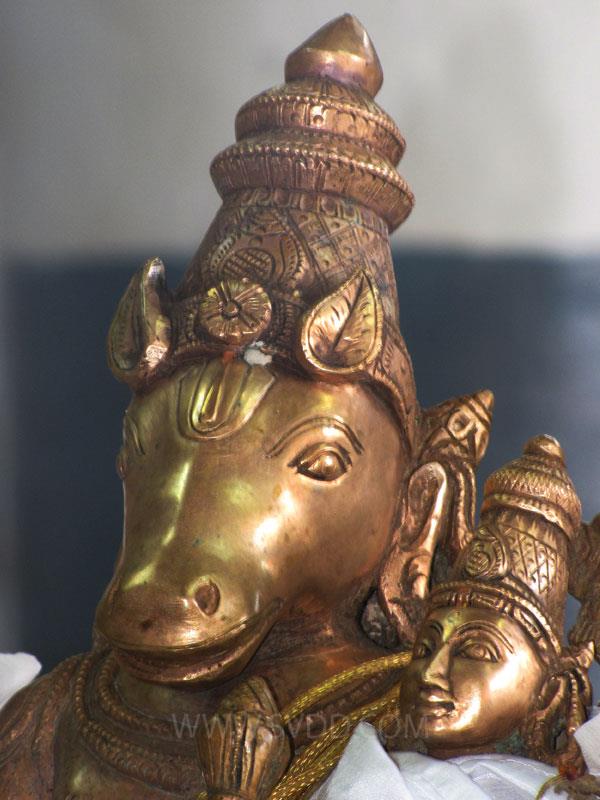INTRODUCTION
Sri Vaishnava Dinasari prabhandham is dedicated to Swami Desikan’s nithya AarAdhana
mUrthy, Sri Varadaraajan. At home or during his travels, Swami always performed
AarAdhanam to Sri VaradarAjan and Sri HayagrIvan after his daily unchivruthti. Those
AarAdhana mUrthys traveled on his head in his Madisanji (the bag made of special cloth for
carrying Vasthrams, ThirumaNN petti and SaaLagramams and Aaradhana mUrthys without
theettu by VaidhikAs).
Like AchArya RaamAnujA, who left for us a Sanskrit Sri Sookthi (auspicious literary work)
named nithyam to instruct us on the daily observances, Swami Desikan out of his infinite
mercy for us created this work called Sri VaishNava Dinasari and placed it at the lotus feet of
Kanchi Sri VaradarAjan.
STRUCTURE OF THIS PRABHANDHAM
A day in Sri VaishNavA’s life is split into five parts. Each of these five divisions in time from
waking up in the morning to resting at night is allocated one observance. Thus there are five
different observances for the five divisions of the time, when a Sri VaishNavan is awake.
These are ordained by SaasthrAs. The other observances known as snAnam (bath), Vasthra
DhAraNam, Wearing of the PuNdrams (ThirumaNN Kaappu), Sri ChoorNa DhyAanam,
SandhyA vandhanam forming part of the Ushath Kaala dharmams (rites at Dawn) are not
included in the Sri VaishNava Dinasari for the sake of brevity by Swami Desikan. The
manthrAs for all of these and other procedures associated with them form the heart of
Ahnikam. The Ahnikam (daily observances) is learned as formal KaalakshEpam at our
AchAryan’s sacred feet prior to Grantha Chathushtaya KaalakshEpam (Learning of Sri
BhAshyam, GithA BhAshyam, The AaRAyira PaDi of PiLLAn and Srimath Rahasya Thraya
Saaram by Swami Desikan).
The ancient five observances described for our daily use are:
1. Abhigamanam: The Sanskrit route, “Abhigam” means going near or to approach. This is
the approaching of the Lord for permission (anuj~nai) to start the day in the right frame
of mind to celebrate Him. The Sri- VaishNavan prays to the Lord to remove all obstacles
that might interfere with the daily observances ordained by the Lord and seeks His
blessings to ward them off.
2. UpAdhAnam: This Sanskrit word means acquisition or obtaining. It has two
subdivisions : a) The collection or acquisition of TuLasi, Flowers and other items needed
for Bhagavath AarAdhanam. (b) Since one’s purity of mind is very important for
Bhagavath- AarAdhanam, one recites the Sri Sookthis of AzhwArs and AchAryAs for the
purification of one’s mind as one goes about collecting the SaamagriyAs (required
materials) for the daily AarAdhanam.
3. Ijyai: This Sanskrit word arises from the root Yajj. Ijyai means worship. It has also other
meanings such as the Supreme being and Union. For our purposes; we can translate Ijyai
as AarAdhanam for the Supreme Being in the Saasthraic manner ordained by Paancha
Raathra or VaikAnasa Aagamams.
4. SvAdhyAyam: This celebrated Vedic word (Taittiriya Upanishad: SikshA Valli: Section 9; “Rutham cha svAdhyAya PravachanE cha–”) means the study and preaching of VedAs
and Upanishads (Sanskritic and Tamil VedAs).
5. Yogam: The meditation on the Lotus feet of the Lord and the prayer for the lord to accept
our head at His sacred feet during our time of sleep as well.
SLOKAS AND COMMENTARY
Swami Desikan has two Tamil Verses for each of these five divisions of the time of the day.
Thus there are 10 (5 x 2) verses in this Prabhandham dedicated to Atthigiri AruLALar of
Kaanchipuram presiding at Hasthigiri under PuNyakOti VimAnam along with PerumdEvi
ThAyAr.
Courtesy: Sri Oppiliappan Koil Sri Varadachari Sathakopan
to be contd…









